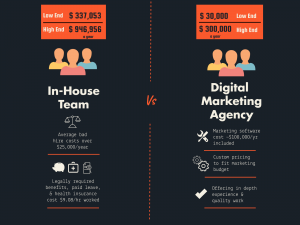— July 7, 2017

Pexels / Pixabay
Web infrastructure is the life force that most modern businesses feed on.
Every aspect of every company depends on some form of connectivity; an enterprise’s ability to grow and thrive often rests on how often its IT resources can evolve in a quick and calculated manor. Unfortunately, engineering that transformation isn’t easy, and the companies that attempt to rely on outdated, inadequate web infrastructures suffer as a result.
The most obvious and marketed consequence is slow response times. Most e-commerce companies hammer home the fact that slow webpages and e-commerce systems drive visitors away, which can cause sales to slip. For context, consider that a one-second page delay causes a site that nets $ 100,000 a day a loss of $ 2.5 million each year.
Web infrastructure can underperform for several reasons. Sometimes, it’s outdated, poorly designed, or just unable to scale. And these problems get exacerbated as a company grows more dependent upon web-based services.
Add on the fact that companies are integrating with third-party software, consuming more software-as-a-service, and trying to optimize online customer touchpoints, and it becomes clear that a big problem is about to grow even larger.
Structural Significance
Calling inadequate web infrastructure a “minor tech issue” is shortsighted. In fact, this is the kind of limitation that can have existential consequences, especially when considering how much of our everyday lives reside on the internet. Massive amounts of commerce are directed at e-retailers, while entire industries like travel booking, music retail, and research now take place almost exclusively online.
Hundreds of billions of dollars in business transactions happen online, and web infrastructure is what makes every single one possible. If it’s even the least bit out of step with demand, it alienates huge numbers of customers and makes building brand loyalty impossible. A Statistica survey revealed that 68 percent of U.K. online consumers feel negatively about a brand when the site crashes, while 37 percent said they avoid shopping on slow sites.
There is a direct link between web infrastructure and the bottom line. And when small issues affect the former, it can lead to a substantial decline in the latter. In order to avoid taking a sudden and significant hit, companies must understand exactly what kind of web infrastructure they have and what kind they actually need.
Auditing and Updating Web Infrastructure
Most companies are relying on fewer resources than they require; however, it would be reckless to invest in more web infrastructure without understanding exactly what, where, and why it’s necessary. Follow this checklist to carefully calibrate your resources with your needs:
1. Analyze performance on the public website. Tools like Google PageSpeed and others make it relatively easy to root out a website’s slow and buggy parts. For the aspects of infrastructure that aren’t consumer-facing, check the capacity of these systems to spot any looming problems. Early detection can diagnose potential issues before they worsen the user experience. It’s like a leaky roof: Problems are much easier and cheaper to fix when you catch them early.
2. Make an application and systems map. Assessing the strength of a web infrastructure is a slow and systematic process. It only takes one point of failure to lead to massive issues systemwide, which means no detail can be overlooked. An application and systems map makes it easier to monitor all your IT and internet infrastructure and verify that each individual component is updated. Also, infrastructure is as strong as the weakest link in the chain of systems. Knowing where these weak links are makes it much easier to maintain an efficient, well-performing system.
3. Introduce redundancies. On that same note, failure is almost inevitable within a complex web infrastructure. If and when that happens, you want to have redundant systems in place that can eliminate every sort of interruption. This requires an additional investment, but it safeguards against a ton of lost revenue.
4. Outsource the data center. Trying to run an on-site data center is complicated, expensive, and uncertain. And now that infrastructure-as-a-service and co-location are such options, there is really no reason to keep everything in-house. Outsourcing your web infrastructure makes it more flexible, scalable, stable, and cost-effective almost immediately.
Companies with web infrastructure problems can be victims of their own success. If your online resources are being overwhelmed by traffic, it means a lot of people are eager to explore your brand and shop your goods.
It also means that website issues appear at the worst possible time. Evaluating and expanding your web infrastructure is a reliable way to stay ahead of success instead of catching up with demand.
Are you curious about the economic toll the cloud is taking on your business? Download this whitepaper to home in on the total cost.
Digital & Social Articles on Business 2 Community
(21)
Report Post




